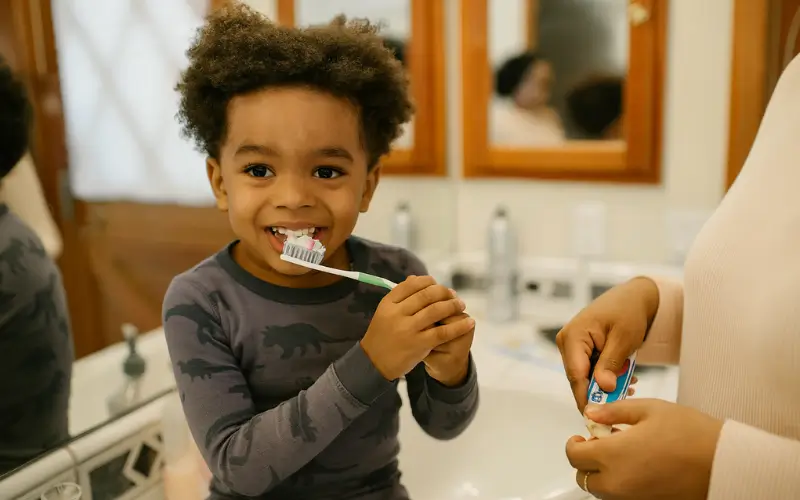Helping children develop healthy habits is one of the most important responsibilities parents and caregivers take on. These habits not only support physical health but also contribute to emotional resilience, social development, and lifelong well-being. The key to success lies in introducing habits gradually, in age-appropriate ways, and reinforcing them consistently as children grow. This guide explores how to build and maintain healthy routines across different stages of childhood, with practical strategies that evolve alongside a child’s needs.
Early Childhood: Building the Basics
In the toddler and preschool years, children begin to understand routines and expectations. This is the ideal time to introduce foundational habits such as brushing teeth, washing hands, eating balanced meals, and getting regular sleep. Because young children learn best through repetition and modeling, consistency is essential.
Parents can make these habits fun and engaging by using songs, games, and visual cues. For example, a colorful chart showing steps for brushing teeth can help toddlers follow along. Involving children in simple tasks like choosing their toothbrush or helping set the table encourages ownership and builds confidence. At this stage, the goal is to create positive associations with healthy behaviors.
School-Age Years: Encouraging Responsibility
As children enter elementary school, they become more capable of managing their own routines with guidance. This is a great time to reinforce habits and introduce new ones that support independence. Healthy eating, regular physical activity, and personal hygiene should be part of daily life. Children can also begin learning about emotional health, such as recognizing feelings and practicing coping strategies.
To support these habits, parents can offer structured choices and set clear expectations. For example, allowing children to choose between two healthy snacks or decide which sport to try gives them a sense of control while keeping options beneficial. Hygiene routines can expand to include more detailed care, such as flossing and using mouthwash if recommended by a dentist. These additions help children take greater responsibility for their health in manageable steps.
The preteen years bring increased social awareness and a desire for autonomy. Children may begin to question routines or resist certain habits, making it important for parents to stay involved while respecting growing independence. This stage is also when peer influence becomes stronger, which can impact choices around food, sleep, and hygiene.
Open communication is key. Rather than enforcing rules without explanation, parents should discuss the reasons behind healthy habits and invite input. For example, talking about how sleep affects mood and school performance can help preteens understand the value of a consistent bedtime. Encouraging journaling, mindfulness, or physical outlets like sports can support emotional health. Reinforcing hygiene practices, including regular use of tools like mouthwash, helps preteens maintain confidence and self-care as they navigate social changes.
Teens: Supporting Long-Term Wellness
Teenagers face a wide range of pressures, from academic demands to social dynamics and identity exploration. Healthy habits can be harder to maintain during this time, especially with busy schedules and shifting priorities. However, teens are also capable of understanding long-term consequences and making informed decisions when given the right support.
Parents should focus on guidance rather than control. Encouraging teens to set their own goals, track progress, and reflect on outcomes fosters accountability. Conversations about nutrition, sleep, exercise, and mental health should be ongoing and judgment-free. Teens may also benefit from learning about stress management techniques, time management, and digital wellness. While they may not always follow routines perfectly, consistent encouragement and modeling from adults can make a lasting impact.
Making Habits Stick Across Ages
No matter the age, the success of healthy habits depends on consistency, flexibility, and positive reinforcement. Children are more likely to adopt routines when they feel supported and when habits are integrated naturally into daily life. Celebrating small successes, offering praise, and adjusting expectations as children grow helps maintain momentum.
It’s also important to recognize that setbacks are part of the process. If a child struggles with a habit, such as maintaining hygiene or sticking to a sleep schedule, approach the issue with patience and problem-solving rather than punishment. Reassessing routines and making small changes can reignite motivation and help children feel capable again.
Conclusion
Introducing healthy habits to children is a gradual, evolving process that requires attention, adaptability, and encouragement. By tailoring routines to each stage of development and reinforcing them with consistency and care, parents can help children build a strong foundation for lifelong wellness. Whether it’s brushing teeth, managing emotions, or making nutritious choices, these habits grow with the child and shape their future in meaningful ways.




